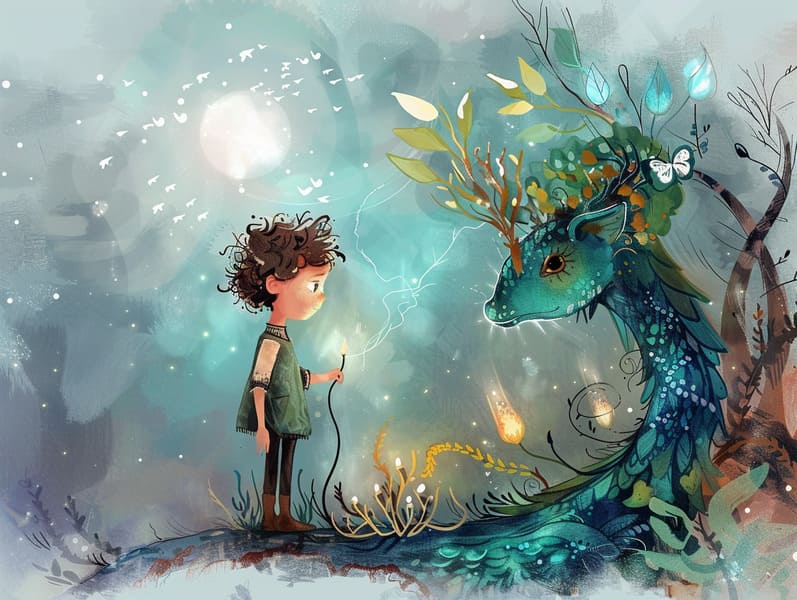The Rise of Fairy Tales to Read with Their Perpetual Radiance.
The Rise of Fairy Tales to Read with Their Perpetual Radiance.
Blog Article

Old fairy tales have long histories. These narratives have been transmitted from one generation to the next ages before they were ever put on paper. They were born from a variety of cultures, including African traditions. They were initially told among older generations, often carrying themes and messages reflective of the societal norms and beliefs of the time.
The Grimm brothers, the two Grimm brothers, were among the first to gather many of these beloved fairy tales. Their anthology, "Grimm's Children's Stories," included narratives like "Cinder Maid," "Hansel and Grethel," and "Snow White," which have since become essentials in the world of beloved fairy tales. Similarly, Hans Christian Andersen's charming tales, such as "The Story of the Little Mermaid," and "The Duckling's Story," have stolen hearts worldwide, establishing their place in the pantheon of timeless fairy tales.
Though they are centuries old, these stories remain as applicable as ever, especially as children's night stories. These charming stories are now available in numerous formats, including richly illustrated books, enchanting animations, and free fairy tales online.
Their unwavering allure can be traced to several enchanting factors:
Significant Morals: Timeless fairy tales often illustrate important moral lessons. Fairy tales like "The Tale of the Boy Who Cried Wolf" teach the importance of integrity, while "The Tale of the Tortoise and the Hare" stress the values of tenacity and unassuming nature. These stories offer young ones clear distinctions between right and wrong, helping to shape their moral compass in a tender yet impactful way.
Compassion and Knowledge: Classic fairy tales frequently involve characters facing challenges and problems, fostering young readers to sympathize with their struggles and champion their triumphs. For instance, "The Tale of Beauty and the Beast" reveals the significance of looking beyond appearances to know the inner self of a individual, cultivating understanding and discernment.
Cultural Insights: Many timeless fairy tales are deeply embedded in the cultural contexts from which they arose. Immersing in these tales can provide illuminating insights into different customs, advancing a sense of global insight and respect.
Imagination and Innovation: The fantasy-filled elements in traditional fairy tales—magical beings—motivate children’s visions. These fairy tales bring readers to extraordinary realms, kindling innovative dreams and a sense of delight that endures a lifetime.
Ancient fairy tales are not only whimsical but also illuminating. They provide mesmerizing tools in fostering various brain and heart skills in children. When old fairy tales are narrated, they foster speaking abilities by introducing new terms and complicated sentence structures. This practice also promotes hearing abilities and focus, as kids track the narrative, excited to see what happens next.
Furthermore, contemplating the themes and characters of fairy tales can advance thought processes and analytical skills. Little ones are taught to discern patterns, anticipate outcomes, and catch on to cause and effect. These analyses also boost little ones reveal their thoughts and feelings, fostering their emotional intelligence.
In today’s technological age, the accessibility of internet fairy tales has made these fairy tales more obtainable than ever. Web platforms and mobile apps offer large libraries of traditional fairy tales that can be enjoyed or listened via anytime, anywhere. Fairy tales read aloud are particularly prevalent, presenting an delightful method for kids to take part in these whimsical stories. Voice books and voiced videos lead characters and settings to life, often enhanced by magical background sounds and background music that enhance the tale experience.
The unending appeal of old fairy tales lies in their ability to modify to today's world while keeping their core messages. Contemporary renditions of these narratives often showcase more inclusive figures and modern settings, making them understandable to today’s audience. However, the central morals of guts, empathy, and impartiality remain unchanged, continuing to resonate with audiences of all ages.
Traditional fairy tales also offer a sense of warmth and recognition. They share a well-structured narrative with a straightforward beginning, middle, and end, often drawing to a close with the closure of conflicts and the triumph of rightness over wrongness. This assuredness can be heartening for little ones, affording a sense of sturdiness in an fluctuating world.
Traditional fairy tales continue to fascinate and teach new generations, maintaining their captivation and applicability in modern society. As children's night stories, they supply a perfect blend of fascination and comprehension, backing moral values, empathy, these guys and creativity. The proliferation of internet fairy tales and the commonness of fairy tales recited guarantee that these old stories remain accessible to new generations.
By perpetuating and sharing these fairy tales, we continue to esteem the rich tapestry of folklore and cultural heritage. Whether you are perusing a artistically illustrated book, accessing a digital library, or listening via an voice book, the magic of children's fairy tales is always within reach. These tales show us of the ageless influence of storytelling and its ability to hold us together across time and space.
No matter if you are exploring a beautifully illustrated book, delving into a virtual library, or listening to an read-aloud book, the charm of popular fairy tales is always within reach.
These narratives teach us of the ageless strength of tales and its ability to bond us across epochs and places, creating a bond that enchants and educates alike.